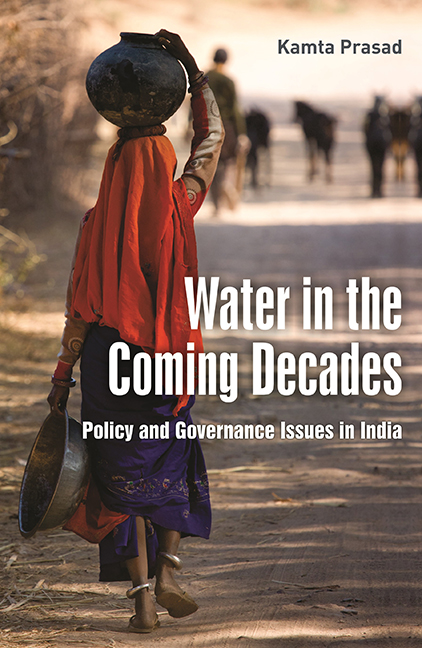Book contents
- Frontmatter
- Dedication
- Contents
- List of Tables
- List of Abbreviations
- Preface
- Acknowledgements
- Section I Overall Perspectives
- Section II Situational Analysis
- Section III Socio-economic, Institutional and Environmental Aspects
- Section IV Technological Options
- Section V Concluding Observations
- References
- Index
22 - Inter-basin Transfer of Water
Published online by Cambridge University Press: 13 July 2022
- Frontmatter
- Dedication
- Contents
- List of Tables
- List of Abbreviations
- Preface
- Acknowledgements
- Section I Overall Perspectives
- Section II Situational Analysis
- Section III Socio-economic, Institutional and Environmental Aspects
- Section IV Technological Options
- Section V Concluding Observations
- References
- Index
Summary
Interlinking of the river projects of the Government of India, which is essentially a scheme for inter-basin transfer of surface water, is an important means for augmenting the supply of water in areas suffering from acute scarcity of water. But this project has also been one of the hot spots in the water sector of India since 2003. This chapter traces the genesis and growth of the project, explains its salient features, provides a critical review of the main arguments in the controversy, puts forward its own views and gives suggestions.
Introduction
Inter-basin transfer of water has been one of the means of augmenting the availability of water in several countries including India as per details provided in Annexure 22.1. Exploratory studies for river links connecting several rivers have been under progress for quite some time in the Central Water Commission (CWC). Based on these, the draft of a National Perspective Plan (NPP), covering 30 river links, was prepared in 1980. A separate agency named as the National Water Development Agency (NWDA) was established by the Government of India in 1982 for carrying out the needed studies. These links came to much public limelight when, in response to a writ petition, the Hon’ble Supreme Court gave a verdict on 31 October 2002, indicating a target of 10 years for completion of all the links as against the NWDA target of 43 years. A High-powered Task Force was also established which brought the matter to further limelight. These developments created the impression as if all the 30 links were going to be implemented within the next 10 years. This aroused a huge controversy. This controversy was partly due to the manner in which the proposal was presented by the then Task Force. The nomenclature itself was misleading as it focussed on interlinking of rivers rather than inter-basin transfer of river water. Besides, the 30 links were lumped together as one single project. The controversy covered the very need for the project as well as its technological, institutional, financial and environmental aspects. This controversy might be a reason for the lukewarm attitude towards this project shown by the UPA government, which came to power subsequently in 2004.
- Type
- Chapter
- Information
- Publisher: Foundation BooksPrint publication year: 2014



